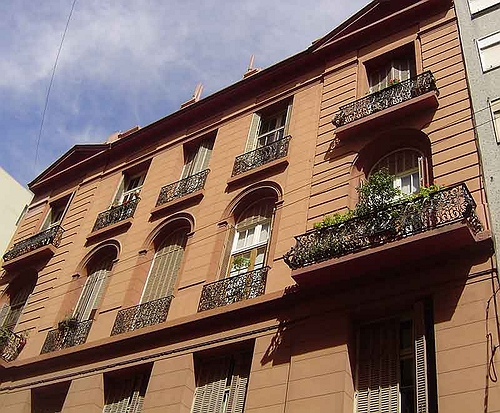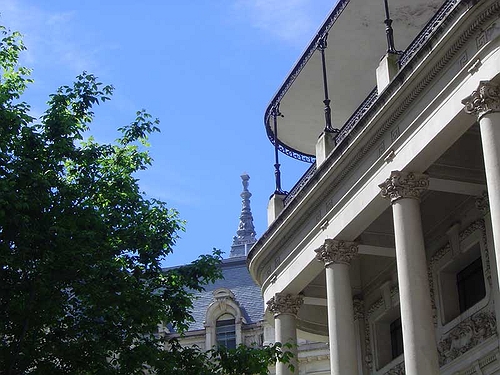Just a couple of blocks away, around the corner from our apartment is AMIA, the Jewish community center here in Buenos Aires. In an upcoming post, I’m going to talk more about the 1994 bombing of AMIA that left 87 dead and wounded more than 100 people. But for now I want to focus on one fortunate cultural survivor of that bombing, which was the artwork of the now largely forgotten Maurycy Minkowski.
Minkowski had come to Buenos Aires in 1930 from Poland with his wife and brother. With them were dozens of oil paintings, watercolors, and drawings that they had planned to sell. It was to be the start of a new tour through the Americas that would expand his reputation. At the time, Minkowski already was known in Europe as a leading Jewish artist.
Minkowski’s works depict the suffering of Jews during the pogroms of Eastern Europe at the turn of the last century. As described by the Jewish Post, Minkowski painted about the “decadence of the human race, the social prejudices, the despair and frightening hopelessness of the Jewish refugees; a personal and a collective experience of the suffering and persecuted Jewish people.”
To get a sense of Minkowski’s paintings two examples are available online at The Jewish Museum in New York: After the Pogrom and He Cast a Look and Went Mad, both of which date from around 1910.
Minkowski, who lost his hearing as a child, was tragically killed while crossing a street in Buenos Aires just two months after his arrival.
His artwork remained in Buenos Aires. Minkowski himself was given a celebrity funeral and buried in the Jewish cemetery in Liniers in Buenos Aires.
Despite the public mourning by the Jewish community in Buenos Aires for the loss of Minkowski, sales of his artwork languished.Minkowski’s reputation started its long decline into obscurity. Ten years after his death his remaining artwork was purchased by the IWO where it remained for decades.
In some ironic way the 1994 bombing of the Jewish community center in Buenos Aires has helped resurrect awareness of Minkowski. Miraculously, 67 works by Minowski survived the bombing that July day on calle Pasteur.
One person who has worked diligently over the last ten years to highlight the work of this nearly forgotten artist is Stanford University librarian Zachary M. Baker who details the story in his excellent essay Art Patronage and Philistinism in Argentina: Maurycy Minkowski in Buenos Aires, 1930 published in Shofar: An Interdisciplinary Journal of Jewish Studies (19.3 (2001) 107-119).
“One of the ironies of Minkowski’s having died in a traffic accident in Buenos Aires was that it prevented him from returning to Europe. What fate would he have met there? Would his paintings have gone up in flames in the Warsaw Ghetto? On the other hand, had Minkowski gone ahead with his oft-expressed wish to settle in Palestine, he might have lived out his days there as an honored artist, with his best canvases gracing the galleries of every Israeli art museum–and reproductions of his most famous images appearing on Israeli postage stamps!”
One of the great, though often overlooked aspects of life, is our own wonderment about the lives of others. What do we really know about those whom we pass on the street, those who have lived in our apartments before us? Hardly anything. The story of Maurycy Minkowski reminds us about the mysteries and uncertainties that fate plays in the world. Someday I will need to make my own pilgrimage out to the cemetery in Liniers and pay my own respect to this Polish traveler who found himself in Buenos Aires 75 years ago. We never know where we will die, where we will remain, or whom will remember us long afterwards.




